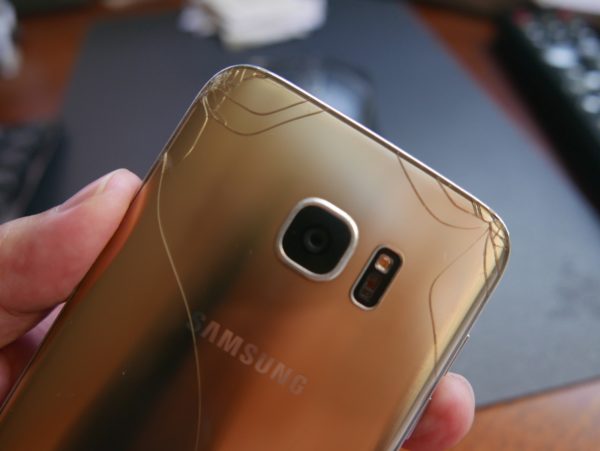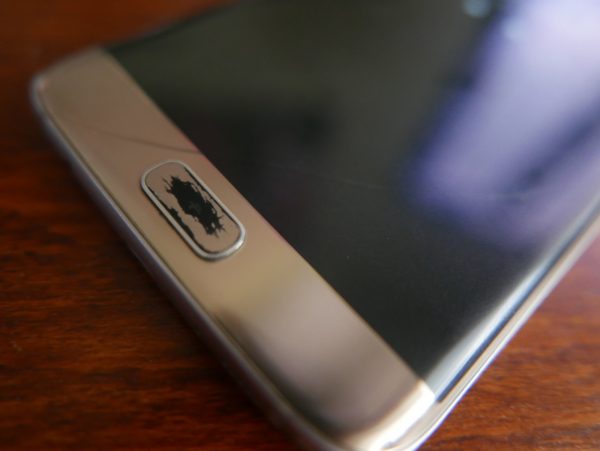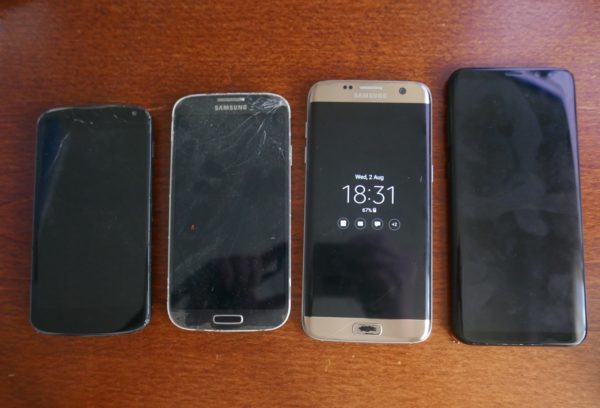
It never fails to catch the eye when I place my year-old Samsung Galaxy S7 Edge on the table these days.
No longer is the ah beng gold exterior the attention grabber these days. Instead, the almost painful crack marks that stretch like scars across the fragile glass surfaces, both front and back, are the conversation starters. Like raw skin, the paint has also rubbed off from the fingerprint sensor.
A common remark would be” “Wow, you really don’t take care of your phone.” “You should really have bought a case” is another oft-heard advice.
Thing is, I didn’t want to have a protective case that would hide the pretty Galaxy S7 Edge, which was the first phone I’d actually look at and admire when it was new.
With curved screens on both sides, it has a design that continues to win Samsung new fans in this year’s even more svelte-looking Galaxy S8 and S8+.

I knowingly carried my phone “naked” in my hand because it was the only way to fully enjoy the design, day-in, day-out. Why pay so much for an expensive phone, only to never see its beauty? You can get a cheaper version without the nice curved edges, for example.
Last year, I did put on a screen protective made of glass. But I took it out after a day when I realised that water got under it and made the screen unusable. I was jogging with it.
The phone is made to be water resistant, so why not do the “unker” thing and run with it? Strava is great on the phone with a fast lock on a GPS satellite overhead, unlike smartwatches that take longer to get started. So, the Galaxy S7 Edge has been a regular running companion.
For me, a phone has to age over time. And if it is slightly impacted by everyday use, that’s how it should be. Just like how a car would suffer from the inevitable scratch and dent over time, a phone can’t avoid the same ravages of time.

For some users, a phone has to be pristine and have resale value. I can understand that, and fortunately for me, I keep using mine for a while, beyond the one-year cycle that some phone enthusiasts find themselves caught in.
Having said that, I’d expect a phone to carry on working, despite the external damage. I’m pretty impressed that through so many accidental drops and even a toddler stepping on it unwittingly, the Galaxy S7 Edge only has external defects. It has continued to work almost perfectly.
Okay, except for the microSD card and SIM card tray, which seems stuck. I guess I’ll have to find a way to push that out or pay M1 S$37 for a replacement SIM card when the time comes to change a phone.
What I won’t stand for, of course, are phones that can’t survive the regular drops and bumps to be expected of everyday use. There isn’t any standard for such tests now, unlike say, car safety trials, so you’ll have to turn to online reviews and user reports for reliability issues.
One tip here – when it comes to dark-coloured phones, you’ll also have to be careful of one thing – chipping.
A silver-coloured device can suffer a chip and have the exposed aluminium blend in well. Not so, for a sleek black gadget like a Samsung Galaxy S8+, as I found after testing a unit for the past few months.
All said, I’m heartened that device makers are taking reliability more seriously. LG’s G6, for example, survives many of the painful parts of the torture test in the video above. Hint: it includes a flame test. That’s a far cry from a couple of phones I’ve broken quite easily over the years.
A Xiaomi Mi Note, for example, had its screen shattered after a few days of use. This was with the first first drop at an angle and on a relatively soft wooden floor.
A Samsung Galaxy Note 4 too was destroyed when its screen fell flat into the asphalt of an HDB block. I had earlier damaged the screen of a Galaxy S4 as well, in another incident.
Then there’s the Google Nexus 4 of 2012, which lasted only as long as the bumper was on. One day off it and it’s screen cracked on the very first drop, which was unfortunately onto a hot concrete floor one.






